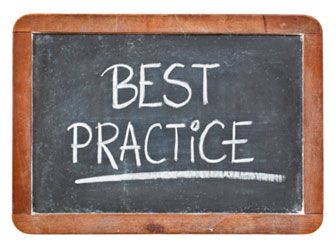10 companies deserve recognition as “Global Food Retailers”. The list is easy to compile, including the familiar banners of Carrefour ( 38 countries), Metro ( 21 countries), and Walmart (17 countries) plus a few others. Global retailers wield tremendous clout over their suppliers for more than their critical mass. Their uniformity of format, information technology, company culture, and communication vehicles create enormous advantages versus the out-manned brand owners. The supplier community typically operates in country based silos with matrix organizations that may include direct sales teams, distributors, and brokers depending on the country. This results in a mosaic of different company cultures and business models jammed together to service the powerful retailers.
Normally, global retailers trust their country based buyers to make most routine product assortment, shelving, pricing, and merchandising decisions. The buyer seller relationship is rarely optimized, as local key account mangers lack the lateral connectivity with their counterparts servicing the same retailer in different countries and continents. In many cases, the key account handler is a distributor employee with little exposure to the global retailers business outside his home country.
How do we “bridge the gap” to include Distributors in the global account management process? Listed below are practical next steps:
Select Global Retailers Critical to your Business There are about ten retailers warranting “Global Retailer” focus. However, suppliers may elect to establish teams and invest resources in one or a handful of global retailers. For example, a manufacturer selling primarily to Asia and the Americas may not need to create a team for Metro or Auchan.
Establish your Team: The team should include each account manager handling the global retailer at a local level whether he is a direct employee or a member of your distributor. Executive level country managers or distributor management can be included, but should not replace the direct sales person responsible for daily account management.
Roles and Responsibilities Team leader should communicate the charter of the group and include areas of responsibility and control as agreed to by stakeholders. The team leader should serve to educate the team on the global retailer’s corporate operating philosophies and initiatives, facilitate the exchange of best practices, and offer the ability to provide guidance on problem solving. Distributor personnel should be viewed as full members of the team. Leaders need to be sensitive that distributors are a “shared service” model and may not be able to devote 100 % of their energy to your brand priorities.
Scorecard The team objective is to build business. The scorecard allows the team to rollup results on a global basis, measure progress on shipment objectives, and track product authorizations by country. Distributors can share information on local status against key deliverables.
Information Access One of the major tools is to establish a web portal or intranet for the global account team. This allows all international team members, including distributors, access to core information, tools, presentations, contacts, and success stories.
Distributors are viewed as valued members of the supply chain by both retailers and suppliers. Their greater integration in the business process at key global retailers will allow the manufacturer better linkage and results at the point of sale. Global retailers are growing at twice the rate of other competitors. Investment in resources against these customers makes sense.


